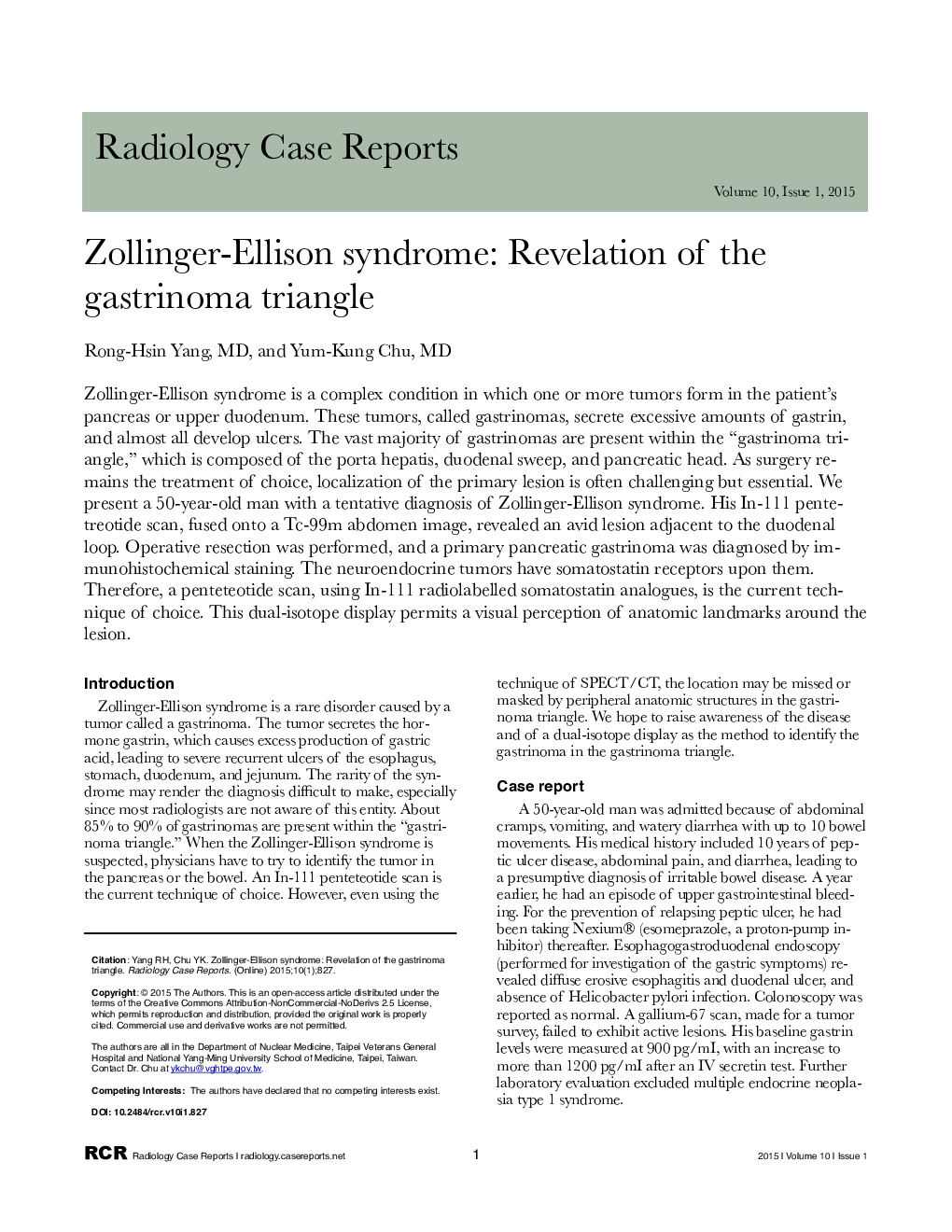| Article ID | Journal | Published Year | Pages | File Type |
|---|---|---|---|---|
| 4247994 | Radiology Case Reports | 2015 | 4 Pages |
Abstract
Zollinger-Ellison syndrome is a complex condition in which one or more tumors form in the patient's pancreas or upper duodenum. These tumors, called gastrinomas, secrete excessive amounts of gastrin, and almost all develop ulcers. The vast majority of gastrinomas are present within the “gastrinoma triangle,” which is composed of the porta hepatis, duodenal sweep, and pancreatic head. As surgery remains the treatment of choice, localization of the primary lesion is often challenging but essential. We present a 50-year-old man with a tentative diagnosis of Zollinger-Ellison syndrome. His In-111 pentetreotide scan, fused onto a Tc-99m abdomen image, revealed an avid lesion adjacent to the duodenal loop. Operative resection was performed, and a primary pancreatic gastrinoma was diagnosed by immunohistochemical staining. The neuroendocrine tumors have somatostatin receptors upon them. Therefore, a penteteotide scan, using In-111 radiolabelled somatostatin analogues, is the current technique of choice. This dual-isotope display permits a visual perception of anatomic landmarks around the lesion.
Related Topics
Health Sciences
Medicine and Dentistry
Radiology and Imaging
Authors
Rong-Hsin MD, Yum-Kung MD,
